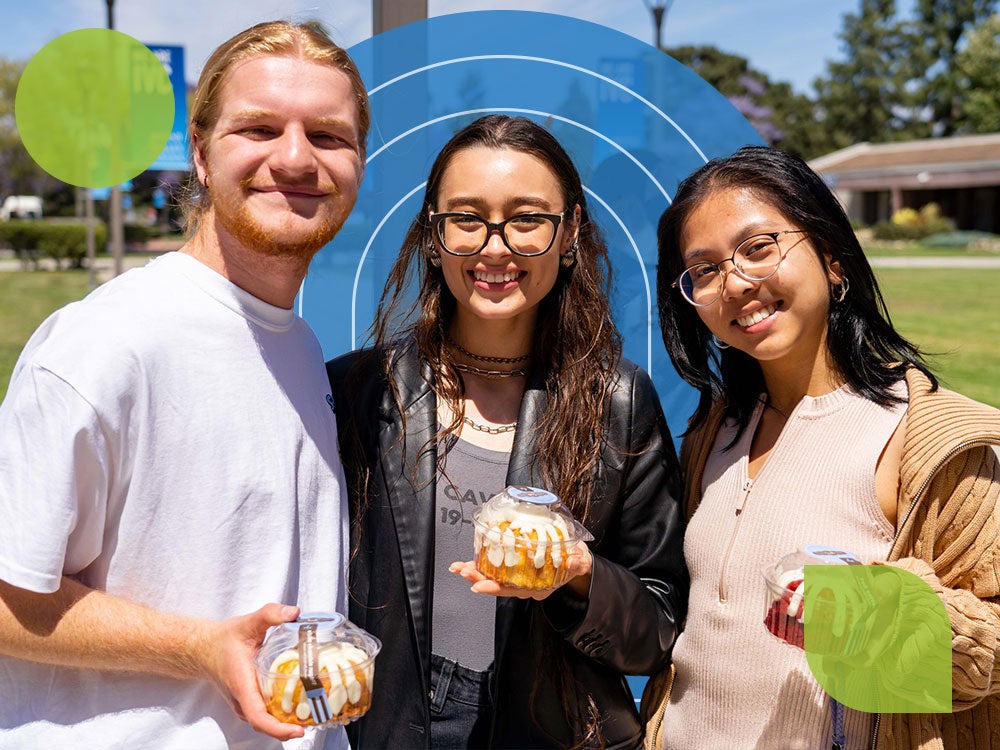Student use of illicit drugs and the unlawful possession and use of alcohol is wrong and harmful. AR 5401 defines clear standards of conduct and drug/alcohol use on campus.
Alcohol Abuse Prevalence
According to the National Institute on alcohol abuse and alcoholism:
- Prevalence of Drinking: In 2013, 59.4 percent of full-time college students’ ages 18–22 drank alcohol in the past month compared with 50.6 percent of other persons of the same age.
- Prevalence of Binge Drinking: In 2013, 39 percent of college students’ ages 18–22 engaged in binge drinking (5 or more drinks on an occasion) in the past month compared with 33.4 percent of other persons of the same age.
- Prevalence of Heavy Drinking: In 2013, 12.7 percent of college students’ ages 18–22 engaged in heavy drinking (5 or more drinks on an occasion on 5 or more occasions per month) in the past month compared with 9.3 percent of other persons of the same age.
Alcohol Abuse Risks and Dangers
According to “Rethinking Drinking, Alcohol and your Health”
- Alcohol is a depressant that decreases the responses of the central nervous system.
- Excessive drinking may cause liver damage and psychotic behavior.
- As little as two beers or drinks can impair coordination and thinking.
- Alcohol during pregnancy raises risk of low-birth weight babies, danger of infection and long-term developmental problems.
- Doctors can diagnose an alcohol use disorder as a medical condition when a patient’s drinking causes distress or harm. In the United States, about 17 million people have it.
- Long-term use can cause permanent damage in the brain, increased risk of mouth and throat cancer, cirrhosis, antisocial behavior, heart disease, sleep disorders, depression, stroke, high blood pressure, sexually transmitted infections from unsafe sex and deterioration of relationships with family, friends, and co-workers.
If you think you have a problem, would like to learn about tools to cut back or quit, or are just thinking about a change, visit the Rethinking Drinking website. (https://alcoholtreatment.niaaa.nih.gov)
Consequences
According to the National Institute on Alcohol abuse and alcoholism, researchers estimate that each year:
- 1,825 college students ages 18- 24 die from alcohol-related unintentional injuries, including motor-vehicle crashes.
- 696,000 students ages 18-24 are physically assaulted by another student who has been drinking.
- 97,000 students ages 18- 24 report experiencing alcohol-related sexual assault or date rape.
- Roughly 20 percent of college students meet the criteria for an alcohol use disorder.
- About 1 in 4 college students reports academic consequences from drinking, including missing class, falling behind in class, doing poorly on exams or papers, and receiving lower grades overall.
- Other consequences include suicide attempts, health problems, injuries, unsafe sex, driving under the influence of alcohol, as well as vandalism, property damage and involvement with the police.
College and Drug Abuse
What is Addiction?
- According to the National Institute on Drug Abuse (NIDA), addiction is a condition that results when a person ingests a substance (e.g., alcohol, cocaine, nicotine) or engages in an activity (e.g., gambling, sex, shopping) that can be pleasurable but the continued use/act of which becomes compulsive and interferes with ordinary life responsibilities, such as work, relationships or health. Users may not be aware that their behavior is out of control and causing problems for themselves and others.
- Young people (ages 18-24) are already at a heightened risk of addiction.
- Addiction can be life-threatening due to overdose, becoming dependent, combining substances or moving on to more dangerous drugs.
- Drug abuse can lead to drug addiction.
Common Reasons for Abuse
According to “College Drug Abuse — A Costly Escape from Stress and Pressure” there are many reasons why college students abuse drugs.
- Anxiety: Students may feel anxious in a new environment or being away from their family. They may feel anxious due to new responsibilities and stress.
- Grades: Students may do “all-nighters” to cram for a test or study. They may be turning to stimulant drugs such as Adderall to complete these tasks. They don’t realize how addictive and dangerous these drugs can be.
- Peer-Pressure: Students are often trying to find themselves and “fit in” socially and may cave to peer pressure. Often this happens when they are trying to be part of a group.
- Social Engagements: Alcohol and certain drugs makes one more social and outgoing. For those who aren’t used to the party scene, or anyone looking to make more friends on campus, this can be an important prospect that may be too hard to resist.
- Experimentation: Part of growing up and finding oneself is experiencing new things. For some, that includes seeing what using drugs and alcohol are really like.
According to the National Institute on Drug Abuse the most commonly used college campus drugs are:
- Alcohol: most abused by students
- Marijuana: Almost half of all college students report using marijuana (it can be considered a “gateway drug”)
- Adderall: very addictive and used for long hours of studying
- Ecstasy: also known as MDMA and Molly
- Opiates: are on the rise and are extremely addictive
Signs and Symptoms of Drug Abuse
- Drastic change in grades or academic performance
- Shifts in sleeping patterns or fluctuations in weight
- Time spent in new social circles, especially among those who have a reputation of abuse
- Withdrawing from friends or acting secretive
- Unexplained changes in behavior or personality
- Uncharacteristic mood swings, depression or irritability
If you want to learn more about commonly abused drugs, drug addiction, health effects, and treatment pages, visit https://www.drugabuse.gov.
Resources from the National Institute on Alcohol Abuse and Alcoholism (NIAAA)
Treatment for Alcohol Problems: Finding and Getting Help
This guide from NIAAA is written for individuals, and their family and friends, who are looking for options to address alcohol problems. It is intended as a resource to understand what treatment choices are available and what to consider when selecting among them.
Rethinking Drinking: Alcohol and Your Health
For anyone who drinks, this site and booklet from NIAAA offers valuable, research-based information to help people to take a look at their drinking habits and how they may affect their health, and find ways to make a change.
Professional help
Your doctor. Primary care and mental health practitioners can provide effective alcoholism treatment by combining new medications with brief counseling visits. To aid clinicians, NIAAA has developed two guides: “Helping Patients Who Drink Too Much” and for younger patients, “Alcohol Screening and Brief Interventions for Youth: A Practitioner’s Guide.” Both are available at www.niaaa.nih.gov/publications/clinical-guides-and-manuals.
Addiction and Substance Abuse Resources:
| ORGANIZATION |
WEBSITE |
PHONE NUMBER |
|
Alcoholics Anonymous |
1-800-622-4357 |
|
|
Al-Anon Alateen |
X |
|
|
Adult Children of Alcoholics |
X |
|
|
Narcotics Anonymous |
X |
|
|
Nar-Anon |
X |
1-800-NO-BUTTS |
|
Cocaine Anonymous |
X |
|
|
Marijuana Anonymous |
X |
|
|
smokefree.gov |
X |
Additional Resources and Information:
| ORGANIZATION |
WEBSITE |
NUMBER |
|
Orange County Health Care Agency |
X |
|
|
Alcohol Outpatient Clinics |
X |
|
|
SAMSHA |
1-800-662-help |
|
|
X |
||
|
24 Hour Help Hotline |
1-800-662-HELP (4357) |
- National Suicide Prevention: 1-800-273-Talk (8255)
- National Institute on Alcohol Abuse and Alcoholism (NIAAA):https://alcoholtreatment.niaaa.nih.gov





